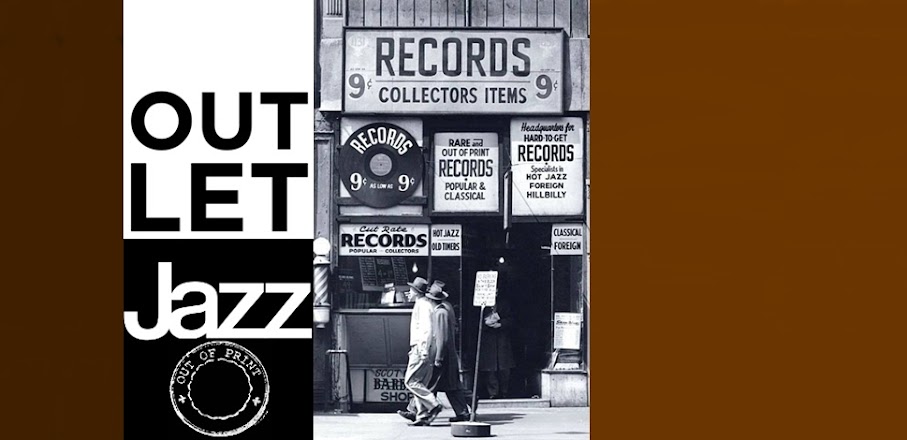Carlton Record Corporation was a label founded by former RCA Victor A&R executive Joe Carlton in October, 1957. The label also introduced a series of instructional LP's under the "Hear How" and "Carlton Impact Sound" series title. The label ceased production around 1964.
A November 14, 1960 Billboard article announces Carlton Records plans for new album series:
An innovation to the Carlton line due to debut around the same time will be the "Carlton Virtuoso Series", which will feature performances by seldom heard and new artists in the pop and jazz fields. George Fields, harmonic soloist, and Gene Estes, a young jazz vibes player from the West Coast, will be the first artists presented.
A curious particularity announced:
The "Virtuoso Series" is being issued for the "sound" market, but will sell at $3,98 (mono) and $4,98 ("provocative" stereo).
The Estes album was loudly titled as "The Greatest Stereo Vibraphone In Recording History". So it would seem foolish to press monaural copies... but that's how it happened.
Although I don't know the stereo version, a specialized Discogs customer reviewed it as follows:
Despite the jacket hype, the stereo separation is not really "provocative", although spread out with the vibes placed noticeably on the left. This is also probably not the "greatest stereo vibraphone in recording history", but it is a pleasant and unassuming jazz set.
This is the monaural "cheap versión":
Estes on vibes is a jazz must. He enjoys a "musicians’ musician" reputation as a leading virtuoso of the vibraphone although with less publicity than the Lionel Hamptons or Red Norvos... or among the modern set, Milt Jackson. Vibe solos by Estes are reproduced in this album with fidelity never attained before this modern stereo age. From low bass to top treble registers, the instrument's sound is perfectly reproduced in this "stereoriented" album. The audiophile will delight in the balanced separation and "presence" while reveling in the composition value. The jazz buff will delight in the subtle Estes line progressions while "digging" the technical stereo-sound quality. *(Liner notes)*
The mallet work of Gene Estes has the backing of guitar, bass, drums, piano and bass clarinet. Estes romps through bouncy arrangements of "Lady Be Good", "Gettin' Sentimental", "Fascinating Rhythm" and "Crazy Rhythm". He also shows he can change feeling with his moody approach to his own original "Califa". There's no doubt that Estes is a powerhouse on the vibes. He's been given excellent sound reproduction, and the result is a good all-around product.
*Billboard, January 30, 1961*
Don't be scared off the ballyhoo of the subtittle "The Greatest Stereo Vibraphone in Recording History".
Estes is a virtuoso who brings taste as well as skill to his own solos and who not only gives his talented sidemen (particulary John Bainbridge on bass clarinet) ample opportunities to shine but also infuses the whole ensemble with a group spirit.
The music itself has exceptionally jaunty chamber-jazz attractives — especially imaginative in Estes own "Califa", "Imitation Silver" and "Wind Up"; dashing yet always lilting in the fast "Fascinating Rhythm" and "Crazy Rhythm". Except for occasional hardness in the too closely miked vibraphone tones, the recording admirably captures both the glitter of these sparkling performances and their stereogenic antiphonies. *R. D. Darrell, High Fidelity Magazine, April, 1961*
Side 1
1 - Lady Be Good
(G. Gershwin)
2 - Give Me The Simple Life
(Bloom, Ruby)
3 - Califa
(G. Estes)
4 - Gettin' Sentimental
(Malneck, Kahn)
5 - Imitation Silver
(G. Estes)
6 - It's Monday Every Day
(S. Robin)
Side 2
7 - Deed I Do
(Rode, Hirsh)
8 - Fascinating Rhythm
(G. and I. Gershwin)
9 - Stompin' At The Savoy
(Sampson, Webb, Goodman, Razaf)
10 - Crazy Rhythm
(Meyer, Kahn, Caesar)
11 - Angel
(Robin, Rogers)
12 - Wind Up
(G. Estes)
Gene Estes (vibes); John Bambridge (bass clarinet); John Pisano (guitar); Joyce Collins (piano); Bob Bertaux, Mel Pollan (basses); Jerry Williams (drums).
Recorded in Los Angeles, California, early 1960.



https://1fichier.com/?2hbqmsc4k35jdeo7ahxq
ReplyDeleteolá,
ReplyDeleteyou did it again, a new new musician for me
thanks a million
joao
Thank you!
ReplyDeleteMuchas Gracias, salud
ReplyDelete